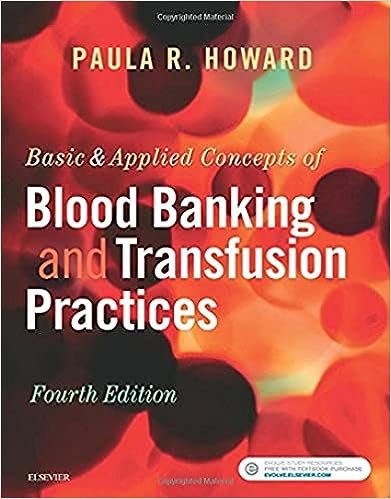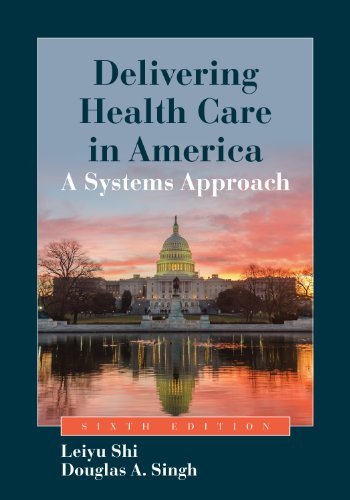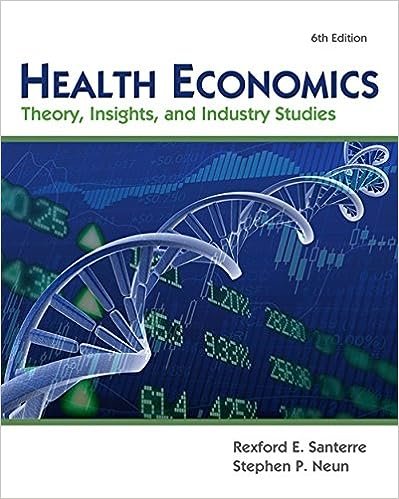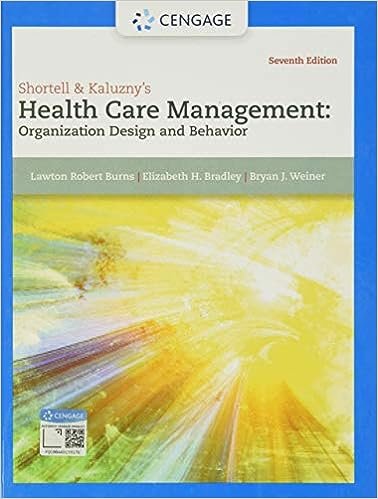Test Bank for Basic and Applied Concepts of Blood Banking and Transfusion Practices 4th Edition by Howard
Chapter 06: Rh Blood Group System
Howard: Basic & Applied Concepts of Blood Banking and Transfusion Practices, 4th Edition
MULTIPLE CHOICE
- Which of the following phenotypes will react with anti-f?
| a. | rr |
| b. | R1R1 |
| c. | R2R2 |
| d. | R1R2 |
ANS: A
The f antigen is the expression of the c and e gene complex when they are inherited on the same chromosome. Because the Weiner nomenclature “r” indicates that the ce gene was inherited together, it will express the f antigen.
DIF: Level 3 REF: p. 136
- Each of the following genotypes is possible for an individual whose red cells react as indicated below except:
| ANTISERA | REACTIONS |
| anti-C | + |
| anti-D | + |
| anti-E | + |
| anti-c | + |
| anti-e | + |
| a. | R1R2. |
| b. | R1r”. |
| c. | Rzr. |
| d. | R0r’. |
ANS: D
The R0r’ genotype expresses the C, c, D, and e antigens, but it does not express the E antigen.
DIF: Level 3 REF: p. 130
- The weak D test detects:
| a. | the Du antigen. |
| b. | the missing D mosaic. |
| c. | a weak D antibody. |
| d. | a weak D antigen. |
ANS: D
The weak D test is the antiglobulin test for the D antigen, which is more sensitive and better able to detect weak D antigen expression.
DIF: Level 1 REF: p. 132
- How would you label a donor who tested negative with anti-D reagent upon immediate-spin and positive in antihuman globulin test?
| a. | D-positive |
| b. | D-negative |
| c. | Cannot label; more testing needed |
ANS: A
Donor testing is required for the weaker D expression by the antihuman globulin test with the unit labeled as D-positive.
DIF: Level 1 REF: p. 132
- A patient phenotypes as D+C+E-c-e+. Predict the most likely genotype.
| a. | R1r |
| b. | R1R1 |
| c. | R1r’ |
| d. | R1R0 |
ANS: B
R1R1 fits the phenotype and is also the more common of the choices given.
DIF: Level 2 REF: p. 130
- How is it genetically possible for a child to phenotype as D-negative?
| a. | Both parents are heterozygous D-positive. |
| b. | Both parents are homozygous D-positive. |
| c. | Mom is homozygous D-positive, and Dad is heterozygous D-positive. |
| d. | The sibling is D-positive. |
ANS: A
The heterozygous expression for both parents would allow the D-negative expression to be passed on to the child.
DIF: Level 2 REF: p. 131
- Current theory regarding the genetics of the Rh system suggests that:
| a. | each Rh system antigen is coded by its own gene locus. |
| b. | Rh system antigens are coded by two closely linked genes. |
| c. | one gene locus with multiple alleles codes for the protein antigens. |
| d. | the Rh system genes are a haplotype that codes for three sets of alleles. |
ANS: B
Two closely linked genes, RHD and RHCE, code for the Rh system antigens.
DIF: Level 1 REF: p. 128
- Red cells that phenotype as D-negative indicate that:
| a. | they inherited two D genes. |
| b. | there is no genetic material inherited from the RHD gene from both parents. |
| c. | a suppressor gene was inherited that is turning off the D gene expression. |
| d. | reagents currently in use are not detecting the D antigen. |
ANS: B
The D-negative phenotype is the absence of genetic material at the RHD gene locus. This lack of genetic material must be inherited from both parents to result in a negative expression.
DIF: Level 1 REF: p. 126
- Anti-D reagent and the D control were tested with patient’s red cells. Both tests were 2+ agglutination reactions. What is the interpretation of the results?
| a. | D-positive |
| b. | D-negative |
| c. | Unable to interpret without further testing |
| d. | D-positive if the sample is from a patient |
ANS: C
The D control should be negative for the test to be valid.
DIF: Level 2 REF: p. 54
- All of the following can cause the D antigen expression to be weaker except:
| a. | inheriting the G gene. |
| b. | inheriting the C antigen in trans to the D antigen. |
| c. | an RHD gene that is genetically weaker. |
| d. | partial D expression. |
ANS: A
The G gene is always inherited when the D or C gene is inherited and has no effect on the strength of the D gene.
DIF: Level 1 REF: p. 133
- An anti-E was identified in a patient who recently received a transfusion. What other Rh system antibody should be investigated?
| a. | Anti-G |
| b. | Anti-f |
| c. | Anti-D |
| d. | Anti-c |
ANS: D
Anti-c is often found in patients who make anti-E. Anti-c is often weaker and shows dosage when the patient is developing the antibody from the first exposure to the antigen.
DIF: Level 1 REF: p. 137
- The frequency of the D-negative phenotype in the population is:
| a. | 15%. |
| b. | 85%. |
| c. | 50%. |
| d. | 35%. |
ANS: A
Fifteen percent of the population is D-negative.
DIF: Level 1 REF: p. 126
- Testing for the weak D expression is performed by:
| a. | using anti-Du antisera with an extended incubation. |
| b. | using monoclonal anti-D. |
| c. | performing the indirect antiglobulin test with anti-D. |
| d. | performing the direct antiglobulin test with anti-D. |
ANS: C
The weak D test (previously called the Du test) involves the indirect antiglobulin test using anti-D reagent.
DIF: Level 1 REF: p. 132
- The numeric Rh4 nomenclature refers to which antigen in the Rosenfield notation?
| a. | C |
| b. | c |
| c. | e |
| d. | E |
ANS: B
The more common Rh system antigens are Rh1 = D, Rh2 = C, Rh3 = E, Rh4 = c, Rh5 = e.
DIF: Level 1 REF: p. 128
- The LW antigen expression is typically stronger on _____________ red cells.
| a. | D-positive |
| b. | D-negative |
| c. | Rh null |
| d. | D-variant |
ANS: A
The original anti-D found by experiments with rhesus monkeys was actually anti-LW that reacts best with D-positive cells.
DIF: Level 1 REF: p. 138











Reviews
There are no reviews yet.